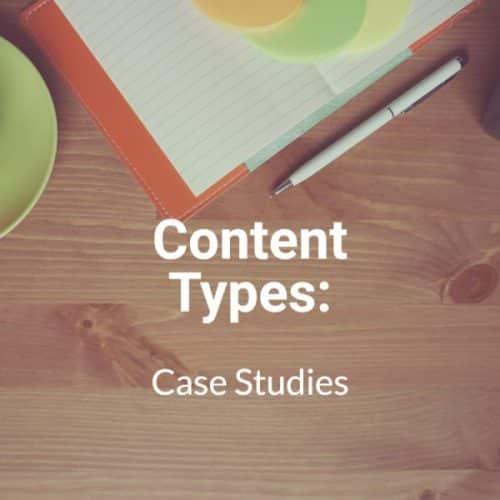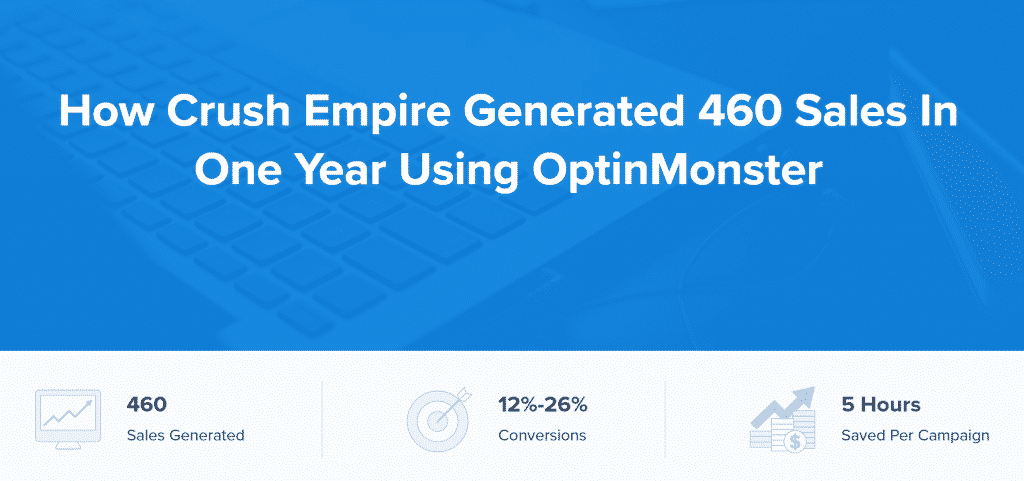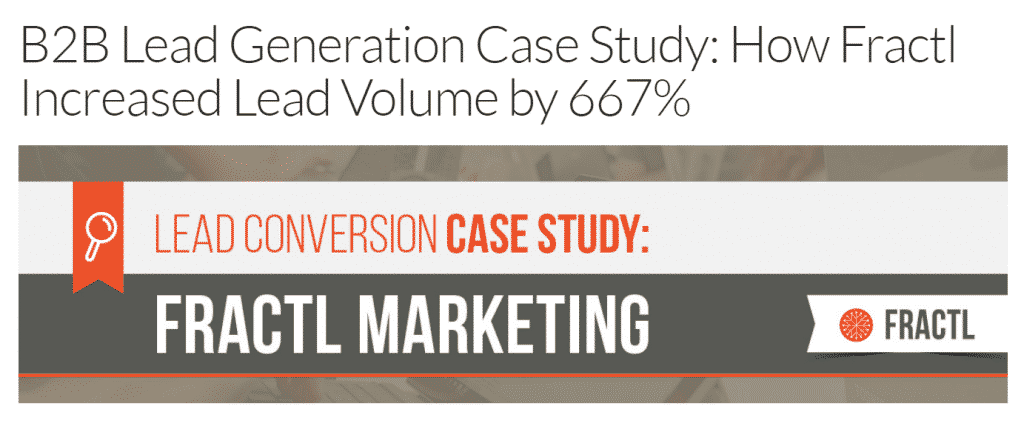
Welcome to the second post in the Content Types series from Horizon Peak Consulting. As we roll out the 8 posts we have planned for this series, our goal is to help you see new opportunities for engaging your target audience and making more sales with your marketing content.
Selling is hard.
Even for natural-born salespeople, it’s not easy to turn skeptics into believers.
Especially today, when your customers have more information than ever before — so they’re more skeptical of salespeople (and sales tactics in general) than ever before.
What if your salespeople had some help … from your customers?
There’s a reason case studies (aka customer success stories) are one of the top three marketing tactics for B2B businesses:
A case study is a medium for letting your happy customers tell other potential customers why they should buy from you.
It communicates trustworthiness.
It’s unpretentious — it gets right to the point: that your product or service is proven, and the reader should seriously consider buying it.
And when done right, it’s compelling and highly targeted.
Why are case studies so effective?
You can’t just tell people to trust you. You have to give them a reason to trust you. That’s just human nature at work.
In the B2B space, and for higher-dollar offerings in general, however, you not only have to earn a customer’s trust — you have to demonstrate your ability to deliver. No one is going to buy your $2,000/month software on a hope and a prayer.
A case study communicates to the reader that you’ve got a track record of success solving a problem. It reveals the positive impact you’re making … and it does it with a story.
The human brain retains and remembers information better when it’s delivered in story format.
Think about how this applies to your offering. You and your sales team could tell prospects about the features and benefits until the cows come home. They go in one ear and out the other.
But tell a story around how those features and benefits changed a customer’s life, and you’ll capture their attention and connect.
Take a look at how OptinMonster told the story of online education company Crush Empire’s huge boost in sales.
How Case Studies Benefit Your Business — No Matter What Industry You’re In
Some say social proof was born when e-commerce became an everyday part of our lives.
I disagree.
Think back to when you were a kid. Before you were doing research online prior to making a purchase. What made you want to beg your parents for something?
A TV commercial? Maybe.
More likely, though, you wanted something because your friends had it and loved it. That toy, that scooter, that pair of Converse All Stars sneakers — you begged your parents to buy that thing for you because your friends said it was cool.
That was social proof in action.
In the grown-up world of B2B marketing, a case study is powerful social proof. It not only tells the story of how a customer benefitted from your offering, but it gives you the opportunity to share the details of the offering right within the story.
Master case-study writers weave features and benefits right into the narrative — and it works. A whopping 78% of B2B buyers use case studies when researching purchases, and a recent LinkedIn Technology Marketing Group study found that case studies dominate the #1 spot as the most effective content format for B2B marketers.
Another great thing about case studies? Readers expect a call-to-action.
The person who is motivated enough to solve their problem that they want to read a case study about how someone else solved the same problem — that person is also going to be more motivated to reach out for more information. They expect information about how to take the next step at the end of the case study.
In the realm of content types, a case study is one of the straightest paths to the sale.
Take a look at how Fractl handled this in their case study about … themselves! I like this example because it boosts the trust even more by revealing to the reader that the company follows their own advice to great effect.
When Case Studies Work Best
It should be pretty obvious by now that case studies are powerful bottom-of-the-funnel assets. Most case-study readers are going to be familiar enough with their problem and motivated enough to solve it that they’re pretty close to pulling the trigger on a solution. Your case study might just be the last bit of encouragement they need to hit the buy button on your offering.
But believe it or not, case studies can be effective in earlier stages of awareness as well.
By their very nature, case studies have targeted keywords and audience-specific copy that work really well to help your target audience find you organically (e.g. in search engines and even through social media — so make sure you’re publishing your case studies as webpages or blog posts in addition to PDFs, and include compelling headlines!). This makes them effective for getting customer attention at the very top of the sales funnel.
A case study can also help people in the Solution Aware stage learn why your solution is the best. Simply mention in the case study some of the other solutions your customer explored or tried before finally solving their problem with your offering.
Here’s a robust example from Apptio — and the end result of saving HP Enterprise $330 million is pretty darn compelling, too.

Supercharging the Case Study Formula
The standard case study formula is 5 simple parts:
- Client/customer/relationship background
- Challenge
- Solution
- Results
- Call to action
This is a standard formula for a reason: It works.
But you can make it work even harder for your business with a few tweaks.
1. Write it as an interesting story
Don’t just rattle off the details of how things went down. Craft a narrative around it.
Here’s a great example from Showcase Workshop.
2. Highlight compelling details and quotes in callouts and sidebars
Make it easy for the reader to get the most important information quickly.
3. Lead with the numbers
Did you help your customer earn 400% more website traffic? Or cut their sales cycle in half? Or reduce pollutants by 25%? Include these numbers in your case study — and add them to the headline if at all possible.
Here’s how Certona did it — and notice that they don’t even share the customer’s name (likely an NDA issue — but a good example of how you can still write a case study, even if your customer isn’t making it easy).
Case Studies Are Your Secret Weapons
Publishing your case study is only the first step. There are myriad ways to promote, extend, cut and repurpose your case study to maximize its value.
Here’s a post I wrote on the subject over at Case Study Buddy.
Build trust. Demonstrate the benefits of buying your offering. Increase your authority. Move the prospect to action. The ROI of case studies is more than monetary.
It’s a content type I recommend for any B2B company, or anyone selling higher-dollar offerings.
Next up in the Series: White Papers
Coming up next in the Content Types series on the Horizon Peak Consulting blog, we’ll be talking about content that sells without selling.




